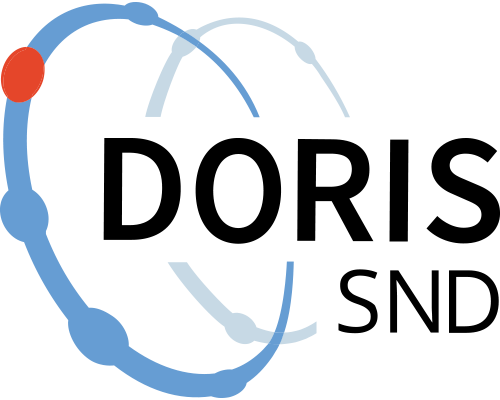An Initiative to Develop Capability-Adjusted Life Years (CALYs) in Sweden: Frequency words - Capability statements version B
https://doi.org/10.5878/dp5t-rp64
This data is part of a project that has developed from the idea of Capability-Adjusted Life Years (CALYs) for the Swedish context. CALYs aim to be a questionnaire-based measure for quality of life that is based on the capability approach and useful for Swedish municipalities to evaluate the cost-effectiveness of interventions.
Economic evaluations in Swedish municipalities mainly rely on a basic cost-savings approach, which entails a risk that interventions with short-term savings are favored compared to interventions that result in long term welfare gains. CALYs would offer an opportunity to systematically measure welfare consequences of different interventions and for example allow a comparison between improved schooling vs drug rehabilitation.
The capability approach was suggested by Amartya Sen (Swedish Central Bank Prize in Economic Sciences in Memory of Alfred Nobel, 1998), and it measures quality of life in terms of capabilities; i.e. what individuals can do or be, as opposed to measuring quality of life in terms of wealth or happiness.
To select relevant capabilities we initiated a Delphi process with stakeholders form the Swedish civil society. The starting point were ten capabilities from a Swedish governmental investigation in 2015 (2015:56), of which the Delphi selected the following six: Finance & housing, social relations, health, occupation, security and civil & political rights.
We used the present dataset to test the impact of phrasing on the CALY-instrument. We tested three different ways to describe the six capabilities to assess their distribution in the Swedish population. The three different versions differed in the extent of how the six capabilities were described and each version was distributed to an independent population sample. For example health:
-A: "I have good general health (physical and mental) that allows me to work or to do what I want"
-B: "I have good general health (physical and mental) that almost always (at least 95% of days) allows me to work or to do what I want"
-C: "I have good general health (physical and mental) that mostly (at least 90% of days) allows me to work or to do what I want"
The survey also contained questions on inequality aversion for the categories of health, salary, and education.
We then chose the final phrasing of the capability statements based on the results and on normative considerations such as those behind laws or policies. For example, if there was little difference between the answer distributions of the three versions, we preferred the A version for simplicity.
The study was performed in June 2020. In an internet-based survey, we quota-sampled 500 Swedish residents for each version from a commercial web-panel, after population proportions of age, region of residence, education, gender.
The survey started with the informed consent statement, followed by questions on participants’ current baseline capability levels in the ten capability dimensions (Low, Medium, and Complete). Next followed questions about capability (not included in this data) and inequality aversion. The survey ended with a number of background questions on socio-economic and demographic conditions.
Sampling large numbers of participants using a commercial web panel is administratively more feasible and quicker than other sampling methods, such as for example direct sampling from the general population. Also, the response rate may be higher and data handling easier. On the other hand, it is less transparent how recruitment into the study was performed and web panel participants may not be representative of the population. Those limitations should be kept in mind when analyzing the data and interpreting the results.
The document data_frequency_B.csv contains the data on self-reported background variables, inequality aversion, and capability levels for phrasing version B of the survey.
We used three different versions of the survey to test the impact of phrasing on the distribution of the answers in the Swedish population. The versions differed in the extent of how the six capabilities were described. Each version was distributed to an independent population sample.
Version A contains statements where capability is described to be complete.
Version B contains statements where capability is described to be less extensive.
Version C contains statements where capability is described to be even less extensive.
For example for health:
-A: "I have good general health (physical and mental) that allows me to work or to do what I want"
-B: "I have good general health (physical and mental) that almost always (at least 95% of days) allows me to work or to do what I want"
-C: "I have good general health (physical and mental) that mostly (at least 90% of days) allows me to work or to do what I want"
All capability statements had three answer options (Agree completely, agree partially, not at all)
Data were collected anonymously with a PHP-based web application for surveys (limesurvey version 4.2.2, https://www.limesurvey.orgOpens in a new tab) hosted on a Umeå university server.
Documentation files
Documentation files
Citation and access
Citation and access
Data access level:
Creator/Principal investigator(s):
Research principal:
Data contains personal data:
No
